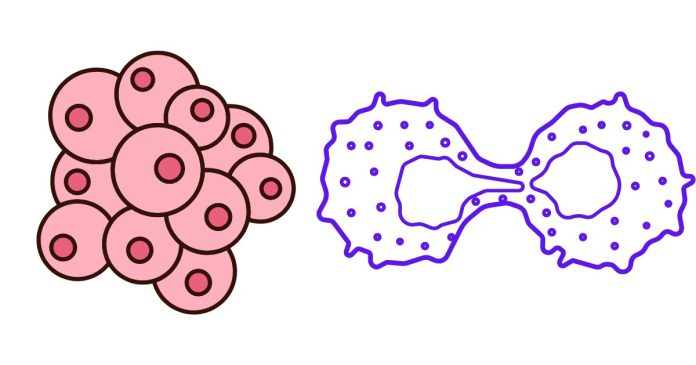Mitosis in a tissue culture of cancer cells involves the same fundamental stages as normal mitosis—prophase, metaphase, anaphase, and telophase—followed by cytokinesis. However, the regulation of the process differs significantly due to the altered genetic and signaling pathways characteristic of cancer cells.
- Prophase: Cancer cells often exhibit chromosomal abnormalities, such as aneuploidy or polyploidy, during the condensation of chromosomes. The nuclear membrane begins to break down, and spindle fibers form.
- Metaphase: Chromosomes align at the metaphase plate. Cancer cells may display errors in spindle attachment or segregation due to defective mitotic checkpoints.
- Anaphase: Sister chromatids are pulled apart. Aberrant segregation in cancer cells can lead to unequal distribution of genetic material.
- Telophase: The nuclear membrane reforms around the segregated chromosomal sets. Cytokinesis follows, dividing the cytoplasm to produce two daughter cells.
Cancer cells often bypass normal regulatory mechanisms that prevent uncontrolled proliferation. This leads to continuous division, genomic instability, and resistance to apoptosis, which are hallmarks of cancer cell behavior in tissue culture.


